Squats: Benefits, Best Variations, and Proper Form
Why Squats Matter
- Updated - May 9, 2025
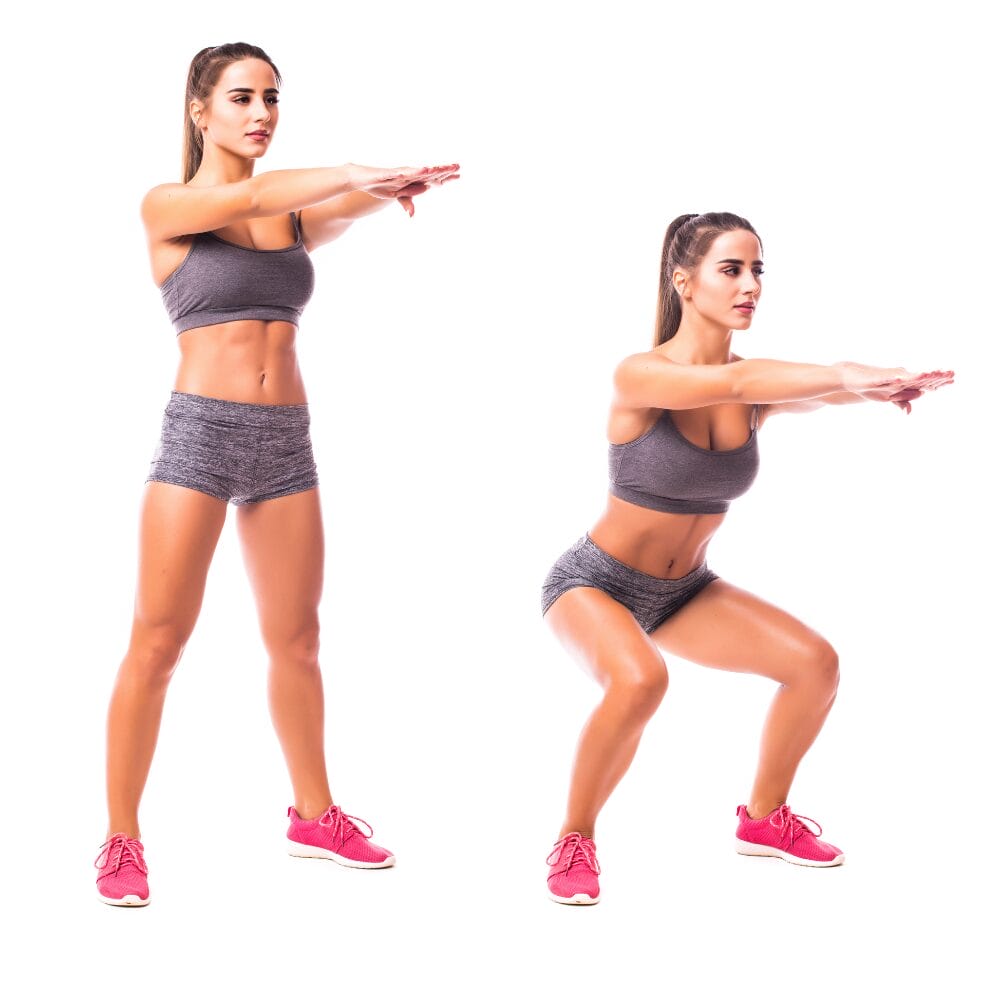
Squats are one of the most fundamental human movements, essential for daily activities like standing up or picking something up. While often viewed as just a leg-strengthening exercise, squats offer much more; they improve mobility, posture, core strength, and athletic performance. As a full-body movement, they play a key role in strength training, rehabilitation, and functional fitness.
Whether you’re an athlete, an older adult maintaining independence, or a practitioner studying movement, mastering the squat is essential. This guide covers everything you need to know, from proper form and variations to biomechanical considerations and progression strategies to optimize your squat safely and effectively.
Squat Mechanics: What to Consider Before You Squat
Before jumping straight into squat mechanics, taking a step back and assessing your own body, movement history, and limitations is necessary. Not everyone should approach squats in the same way. Several factors influence how to squat, including mobility restrictions, muscle imbalances, limb length discrepancies, and past injuries. Taking time to assess these elements can prevent common mistakes and set you up for success.
1. Your Current Mobility
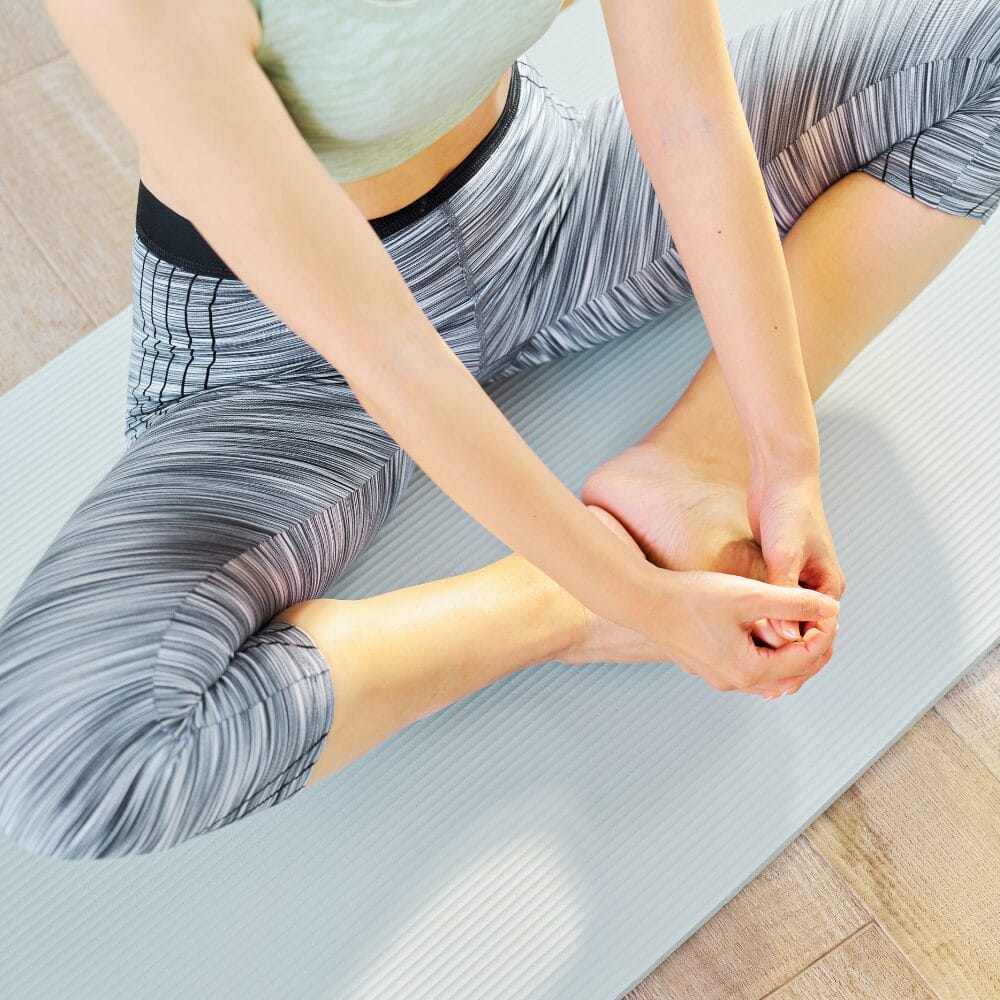
- Do you experience stiffness in your ankles, hips, or lower back? If so, this may be limiting your squat depth.
- Do you have trouble keeping your heels on the ground while squatting? This could indicate restrictions in your ankle mobility.
- Can you squat to parallel without pain? If not, you may need to consider some modifications.
Discover a practitioner near you.
Looking for a practitioner near you? Our extensive network of qualified professionals is here to help you.
2. Your Strength and Stability
- Can you hold a squat position without wobbling forward or backward? If not, incorporating core and glute activation exercises may help.
- Are your knees caving in as you squat? Knees falling inwards could indicate weak hip stabilizers.
- Can you engage your core while squatting, or do you feel strain in your lower back?
3. Lower Limb Discrepancy (LLD) and Squat Mechanics
- If one leg is functionally longer than the other, this can lead to imbalanced weight distribution in a squat.
- LLD can affect hip mobility and knee alignment, potentially leading to compensatory movements.
- Solution: If necessary, address LLD-related compensations through mobility work, stability training, and potential orthotic interventions.
4. Mobility vs. Stability in Squatting
Squatting efficiently requires a balance between mobility and stability at different joints:
- Mobile joints (which require an adequate range of motion):
- Ankle (dorsiflexion & plantar flexion)
- Hip (flexion & rotation)
- Thoracic spine (extension & rotation)
- Stable joints (require control and proper alignment):
- Knee (hinge movement with minimal side-to-side deviation)
- Lumbar spine (maintaining a neutral posture to avoid excessive flexion or extension)
- Cervical spine (Keeping the head in a neutral position)
When mobility is limited in one area, the body often compensates by taking movement from a more stable joint, which can raise the risk of injury. To prevent this, paying attention to proper squat mechanics is essential. This ensures efficient movement while minimizing excessive strain on the compensating joints.
Squat Variations and Their Purpose
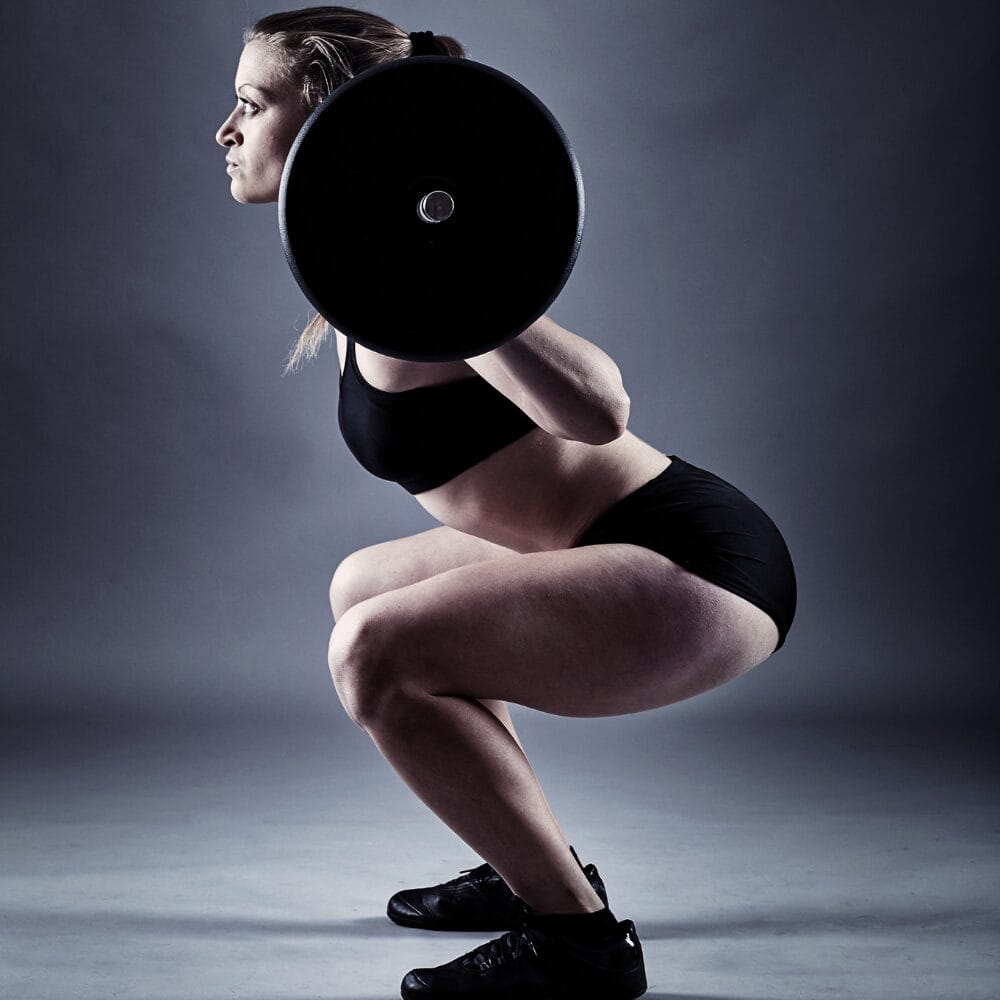
Different squat variations serve different purposes; some may be more suitable for your goals and body type than others. Choosing the right variation can help you optimize performance, reduce strain, and work around mobility or strength limitations.
Here’s a breakdown of some common squat variations, along with when and why they might be preferred:
Common Squat Variations:
- Bodyweight Squat – A great way to develop foundational movement patterns. Body weight squats are helpful for beginners, warm-ups, and mobility work. They allow you to focus on technique before adding resistance.
- Best for: Beginners, warm-ups, rehabilitation, and mobility training.
- Goblet Squats – Holding a kettlebell or dumbbell at chest level helps reinforce an upright posture and better core engagement. The front-loaded position encourages proper depth and prevents excessive forward lean.
- Best for: Teaching proper squat form and core activation to those struggling with back squat mobility.
- Back Squats (Barbell Squats) – Performed with a barbell on the upper back, this is ideal for building maximal strength. This variation places significant emphasis on the posterior chain (glutes, hamstrings, and lower back) and allows for heavier loading.
- Best for: Strength athletes, powerlifters, and those looking to increase total-body power.
- Front Squats – Shifting the barbell to the front of the shoulders increases quadriceps engagement and requires more core activation to maintain an upright position. This variation also reduces strain on the lower back compared to back squats.
- Best for: Olympic lifters, individuals with lower back concerns, and those wanting to improve upper-body posture and thoracic mobility.
- Box Squats – A squat variation where the lifter descends to a controlled seated position on a box or bench before standing back up. This variation emphasizes hip engagement, posterior chain activation, and controlled depth while reducing knee strain.
- Best for: Beginners learning proper form, lifters focusing on posterior chain development, and individuals recovering from knee issues.
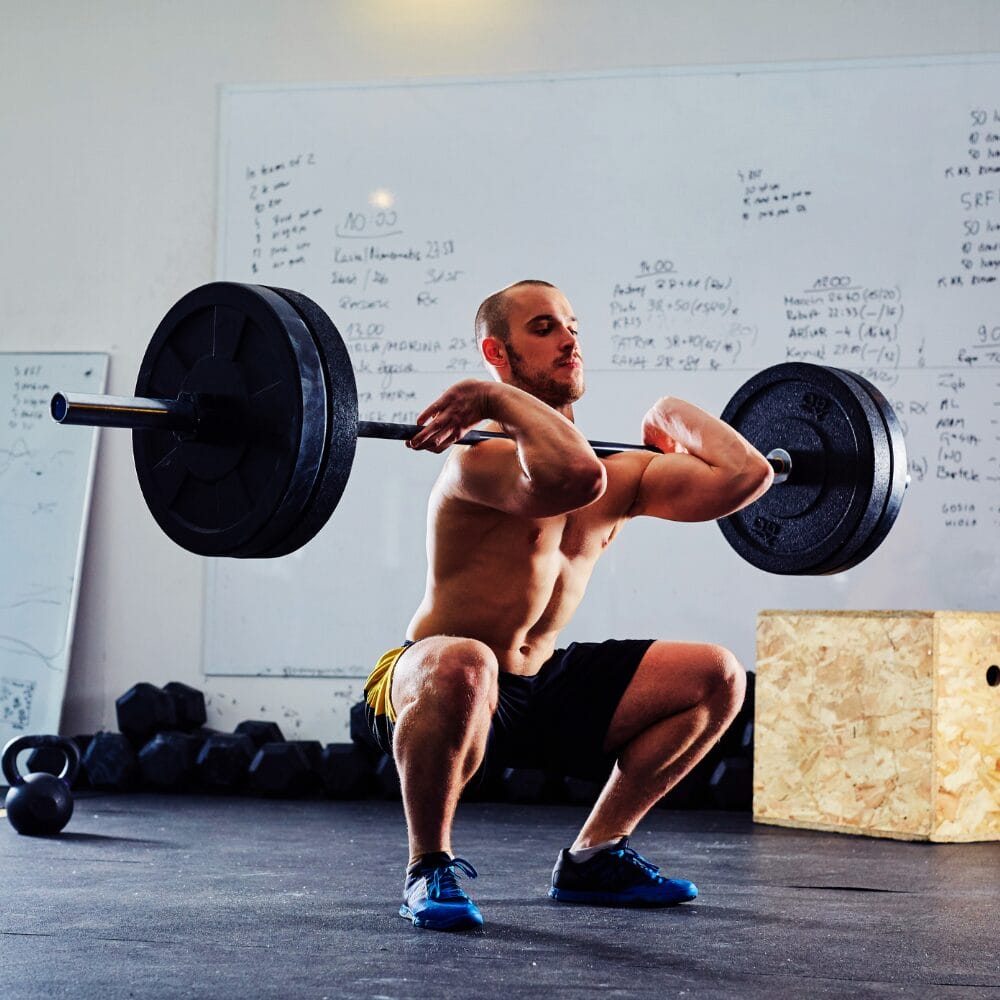
The Squat Movement: Stability and Mobility Implications Throughout the Motion
Squatting is a dynamic process that involves a coordinated sequence of muscle activation, joint mobility, and stability control. Understanding how each phase of the squat influences different body parts can help improve form, prevent compensations, and maximize efficiency.
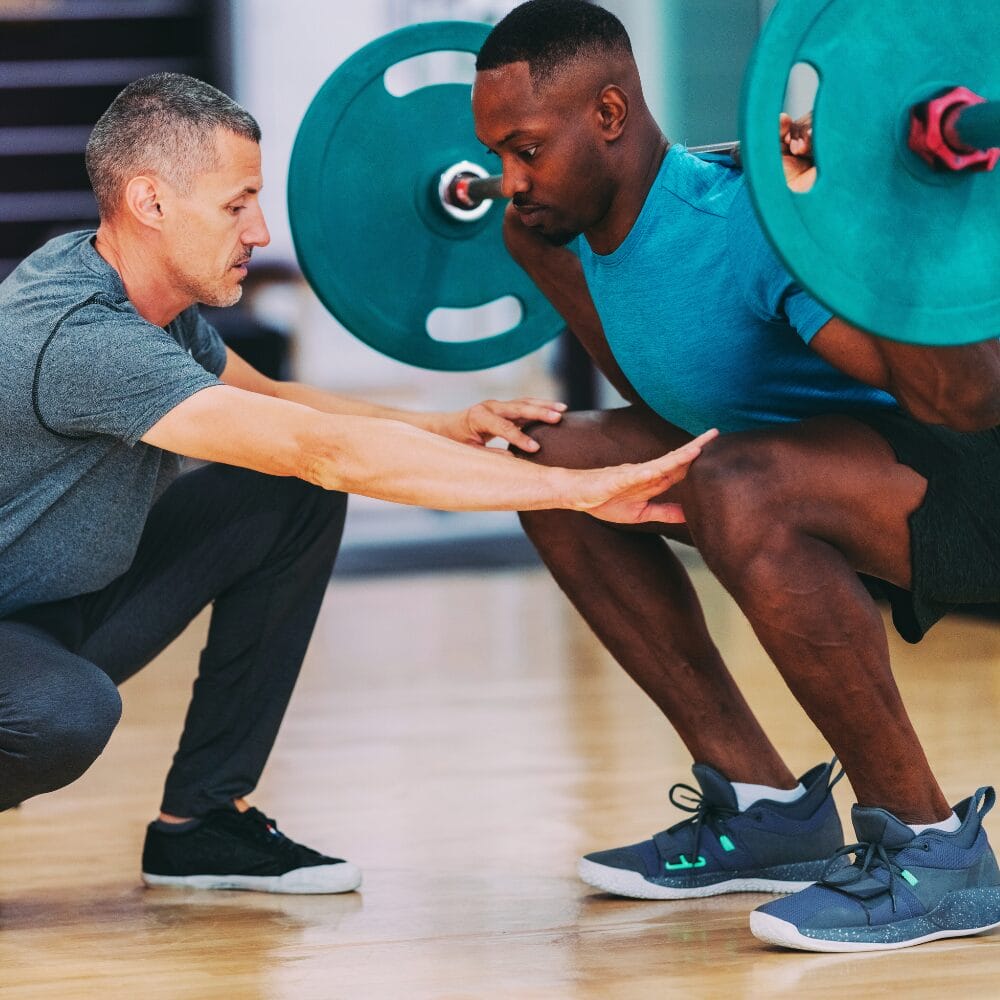
1. The Setup: Establishing a Stable Base
Positioning is key before descending into a squat. A solid setup ensures you move efficiently and minimize excessive stress on any joint.
- Foot Positioning: Feet should be roughly hip-to-shoulder width apart, with toes slightly turned out (depending on hip mobility). A neutral or slightly externally rotated stance helps optimize depth while maintaining joint alignment.
- Weight Distribution: Pressure should be evenly spread across three key points of the foot; the ball of the big toe, the ball of the little toe, and the center of the heel. This creates a stable base of support and prevents unnecessary forward or backward shifting.
- Core Activation: Before initiating movement, engage the core by bracing (not sucking in) to support spinal alignment. This helps maintain lumbar stability and prevents excessive forward lean.
2. The Descent: Controlled Mobility & Stability
The squat’s eccentric (lowering) phase is where mobility at key joints plays a critical role in ensuring smooth and effective movement.
- Ankle Mobility: Proper dorsiflexion is necessary to allow the knees to track forward while keeping the heels down. Limited ankle mobility can cause compensations, such as excessive forward lean or heel elevation.
- Knee Tracking: Knees should move in line with the feet, avoiding inward collapse (valgus) or excessive outward flare. Weak hip stabilizers (such as underactive glutes) can contribute to poor knee tracking.
- Hip Flexion: The hips should move back and down in a hinge-like motion while keeping the torso upright. If hip mobility is restricted, the lumbar spine may compensate by rounding (posterior pelvic tilt), leading to stress on the lower back.
- Thoracic Spine Positioning: A neutral or slightly extended thoracic spine helps maintain balance and prevents excessive rounding of the back, which can lead to loss of core control and unnecessary strain.
3. The Bottom Position: The Mobility-Stability Balance
The lowest point of the squat represents the greatest demand on both mobility and stability. Some key considerations include:
- Depth & Joint Stacking: The depth of your squat depends on hip, ankle, and spinal mobility. Ideally, the femur (thigh bone) should be at least parallel to the ground without excessive lumbar rounding.
- Pelvic positioning: crucial when squatting, as a common issue is the “butt wink,” or posterior pelvic tilting. This can occur due to poor hip mobility or core instability, which may lead to lumbar stress over time.
- Engagement of Key Muscle Groups: To ensure an efficient transition into the upward phase, the glutes, hamstrings, and quads should be actively engaged in the bottom position.
4. The Ascent: Power & Stability
The squat’s concentric (upward) phase focuses on force production and stability. Here’s what happens biomechanically:
- Ground Force Application: The movement starts from pushing through the feet, particularly driving through the heels and midfoot to maintain balance.
- Hip & Knee Extension Coordination: The glutes and quads drive hip and knee extension, ensuring smooth, controlled movement upward.
- Core Engagement for Spinal Stability: The core should remain braced to support the spine and prevent hyperextension (arching) at the lumbar region.
- Avoiding Early Knee Extension: The knees and hips should extend together—extending the knees too early (also called a “good morning squat”) places excessive strain on the lower back.
5. The Lockout: Full Extension & Re-Stabilization
At the top of the squat, it’s essential to re-engage in proper posture:
- Stand tall with a neutral pelvis, avoiding overextending the lower back.
- The glutes should contract at the top to reinforce hip stability.
- Shoulders remain down and back, maintaining thoracic alignment.
The Role of Mobility and Stability Throughout the Squat
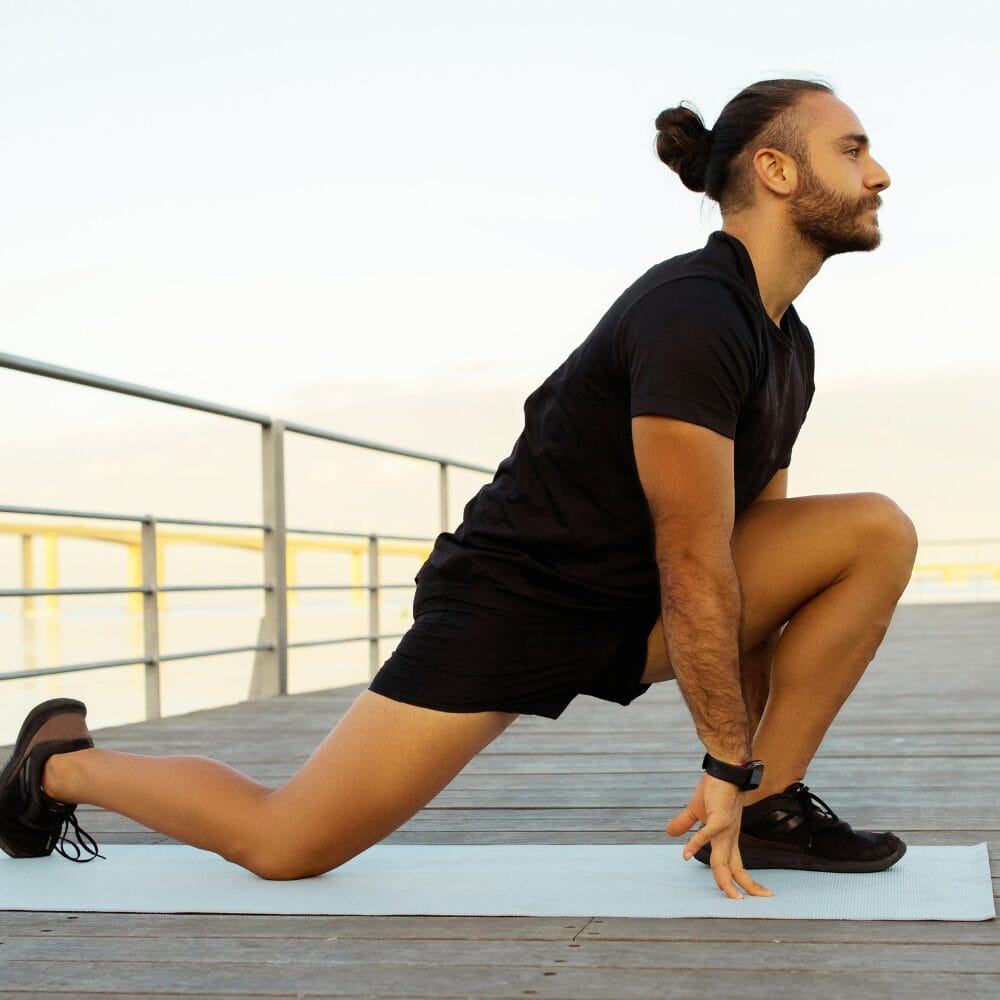
Every joint involved in the squat has a role in maintaining either mobility or stability throughout the movement. Here’s a breakdown of how these roles interact:
| Joint | Role | Common Issues | Solutions |
| Foot & Ankle | Mobility | Poor dorsiflexion leads to forward lean | Ankle mobility drills, calf stretches |
| Knee | Stability | Valgus collapse due to weak hips | Strengthen glutes, cue proper tracking |
| Hip | Mobility | Limited hip flexion causes butt wink | Hip mobility work, deep squat practice |
| Lumbar Spine | Stability | Rounding or hyperextension | Core bracing, maintain neutral spine |
| Thoracic Spine | Mobility | Excessive rounding of the upper back | Thoracic extension work, posture cues |
| Cervical Spine | Stability | Forward head position | Keep gaze neutral, avoid excessive neck extension |
Key Takeaways
- A proper squat is a balance of mobility and stability. If one area is restricted, compensation will occur elsewhere.
- Depth is individual. Not everyone needs to squat ass-to-grass; focus on pain-free, controlled movement within your range.
- Good technique prevents injuries, ensuring proper joint stacking and muscle activation reduces excess strain on the knees, back, and hips.
- If mobility is lacking, address it first. Before loading the squat, perform mobility drills to free up movement in the ankles, hips, and thoracic spine.
- Progression matters. Start with bodyweight squats or goblet squats before moving to heavy barbell variations.
Squats are a foundational movement that, when done correctly, can enhance strength, mobility, and overall movement efficiency. However, not all squats are the same; your unique anatomy, mobility restrictions, and stability demands will shape how you squat. Understanding the role of each joint, maintaining proper alignment, and focusing on controlled movement will allow you to squat effectively without unnecessary risk.
By improving your squat mechanics, addressing mobility limitations, and reinforcing stability where needed, you’ll unlock greater strength, resilience, and movement freedom for the long term.
When Squatting Might Not Be the Best Option
While squats are beneficial for most people, there are cases where they need to be adjusted or avoided. Recognizing these situations can help prevent discomfort, injury, or exacerbation of existing issues. Instead of forcing the movement, modifying or substituting with alternative exercises may be the best approach.
1. Severe Joint Pain or Chronic Conditions
If you experience persistent knee, hip, or lower back pain during squats, it could indicate underlying joint issues such as arthritis, cartilage damage, or a degenerative condition. Squatting under these circumstances might place excessive stress on already compromised joints, leading to inflammation or further deterioration.
2. Recent Injury or Surgery Recovery
Squats involve multiple muscle groups and joints, making them potentially problematic for those recovering from ACL injuries, hip replacements, or lower back surgeries. Attempting to squat too soon can hinder recovery and strain healing tissues excessively.
3. Foot & Ankle Mechanics and Squatting
- Pes Planus (Flat Feet): Can contribute to excessive pronation, leading to knee valgus and hip instability.
- Pes Cavus (High Arches): Creates foot rigidity, potentially reducing shock absorption and increasing stress on the knee.
- Solution: Improve foot mechanics through mobility drills and corrective exercises to ensure stable squat patterns.
4. Uncontrolled Pain or Discomfort During the Movement
Pain indicates something is off, whether due to muscle imbalances, poor mechanics, or an underlying injury. If squatting causes pain, ignoring the issue may lead to long-term problems.
A qualified healthcare professional should assess persistent or sharp pain to determine if underlying structural or functional issues need to be addressed. Ignoring these warning signs can lead to further injury or chronic pain conditions.
Final Thoughts

Squats are a valuable movement that can benefit nearly everyone, but how you squat should be personalized to you. Rather than forcing yourself into a rigid “perfect form,” focus on understanding your movement patterns, respecting your limitations, and progressing intelligently.
By recognizing the role of mobility and stability, addressing biomechanical compensations, and modifying the movement when necessary, you can make squatting more effective, safer, and better suited to your body’s needs.
Squatting is about more than just strength—it’s about moving well, feeling good, and ensuring longevity in movement. Take your time, make adjustments where needed, and enjoy the process of refining your squat!
Frequently Asked Questions (FAQ) About Squats
Why are squats important?
Squats are a fundamental daily movement, from sitting down and standing up to lifting objects. They help build leg strength, improve mobility, prevent injuries, and enhance posture. Squats also strengthen the core, glutes, and back, making them one of the most effective exercises for overall health and function.
How do I squat properly?
To perform a basic squat:
- Stand with feet shoulder-width apart (toes slightly turned out if needed).
- Brace your core (tighten your stomach as if preparing for a light punch).
- Lower your hips down and back, keeping your chest up and knees tracking in line with your toes.
- Go as low as your mobility allows while keeping your heels on the ground.
- Push through your heels to stand back up.
- How deep should I squat?
For most people, squatting until your thighs are parallel to the ground is a good goal. However, depth depends on mobility, comfort, and joint issues. If you can squat lower without pain or rounding your lower back, that’s fine too!
Are squats bad for my knees?
No! When done correctly, squats are great for knee health because they strengthen the muscles that support the joint. After checking for any underlying issues, knee pain during squats usually results from the following:
- Weak glutes or core (leading to poor control).
- Improper form (knees caving inward or excessive forward leaning).
- Lack of ankle mobility (causing heels to lift).
Should my knees go past my toes when squatting?
It’s a common myth that knees should never go past the toes. For many people, it’s natural for the knees to move slightly forward, especially in deeper squats. The key is maintaining balance, control, and knee alignment with your toes.
What’s the best squat variation for beginners?
Start with:
- Bodyweight Squats – Build a strong foundation.
- Goblet Squats – Holding a weight at your chest helps improve posture.
- Box Squats – Squatting down to a chair or box can help with control.
How can I improve my squat flexibility?
If you struggle with squat depth or mobility, try:
- Ankle stretches (calf stretches, wall ankle mobilization).
- Hip mobility drills (deep squat holds, hip flexor stretches).
- Thoracic spine extension exercises (to improve posture and upright squatting).
Should I squat with my feet pointing straight ahead?
Not necessarily! Foot position depends on your hip anatomy. Most people feel comfortable with a slight outward turn (10-30 degrees). The important thing is that your knees track in the same direction as your toes.
How often should I do squats?
It depends on your goals:
- For general fitness: 2-3 times per week
- For strength building: 3-4 times per week
- For mobility improvement: Daily, with lower intensity
Can squats help with back pain?
Yes! Squats strengthen your core, glutes, and posture-supporting muscles, which can help reduce back pain. However, if squats cause discomfort, check your form, mobility, or core strength before continuing.
Should I use weights when squatting?
Start with bodyweight squats first. If you can squat with good form and control, you can add weights such as:
- Goblet squats (holding a dumbbell/kettlebell at your chest) – Best for beginners.
- Barbell squats – For more advanced strength training.
Can I squat if I have joint pain?
If you have knee, hip, or back pain, you may need to:
- Adjust your stance or depth.
- Strengthen weak muscles (e.g., glutes, core).
- Try a box squat or assisted squat (using a support).
- Consult a professional if the pain persists.
Should I wear shoes when squatting?
For general squatting, any flat, supportive shoe works fine. Some prefer barefoot squatting or weightlifting shoes, which have an elevated heel to assist with mobility.
Are squats good for posture?
Absolutely! Squats help strengthen the core, back, and leg muscles, essential for good posture and spinal health.
Resources
Articles:
A Biomechanical Review of the Squat Exercise: Implications for Clinical Practice
This clinical commentary discusses how the biomechanical demands of the squat can be influenced by modifiable parameters such as stance width, foot rotation, trunk position, tibia position, and depth. It emphasizes the importance of understanding these variations for proper exercise prescription in clinical settings. The article provides general recommendations for specific clinical conditions to assist clinicians in prescribing the squat exercise effectively.
Impact of the Deep Squat on Articular Knee Joint Structures
This study reviews the safety of deep squats, concluding that they are generally safe for knee joint health and can enhance physical performance. It suggests that deep squats can be included in resistance training programs without increased risk of injury, provided proper technique is maintained. The review highlights benefits in strength, speed, and jumping ability compared to partial range squats.
The Use of Free Weight Squats in Sports
This narrative review discusses the benefits of using free weight squats in sports, highlighting their role in increasing maximum strength. It emphasizes the effectiveness of full and parallel squats in enhancing athletic performance.
Addressing Biomechanical Errors in the Back Squat for Older Adults
This article provides a clinical perspective on maintaining proper form during back squats for older adults. It focuses on addressing biomechanical errors to ensure neutral spine and knee alignment, which is crucial for safety and effectiveness in this demographic.
PLEASE NOTE
PostureGeek.com does not provide medical advice. This information is for educational purposes only and is not intended to be a substitute for professional medical attention. The information provided should not replace the advice and expertise of an accredited health care provider. Any inquiry into your care and any potential impact on your health and wellbeing should be directed to your health care provider. All information is for educational purposes only and is not intended to be a substitute for professional medical care or treatment.
About the author
Join our conversation online and stay updated with our latest articles.
Find Expert Posture Practitioner Near You
Discover our Posture Focused Practitioner Directory, tailored to connect you with local experts committed to Improving Balance, Reducing Pain, and Enhancing Mobility.
